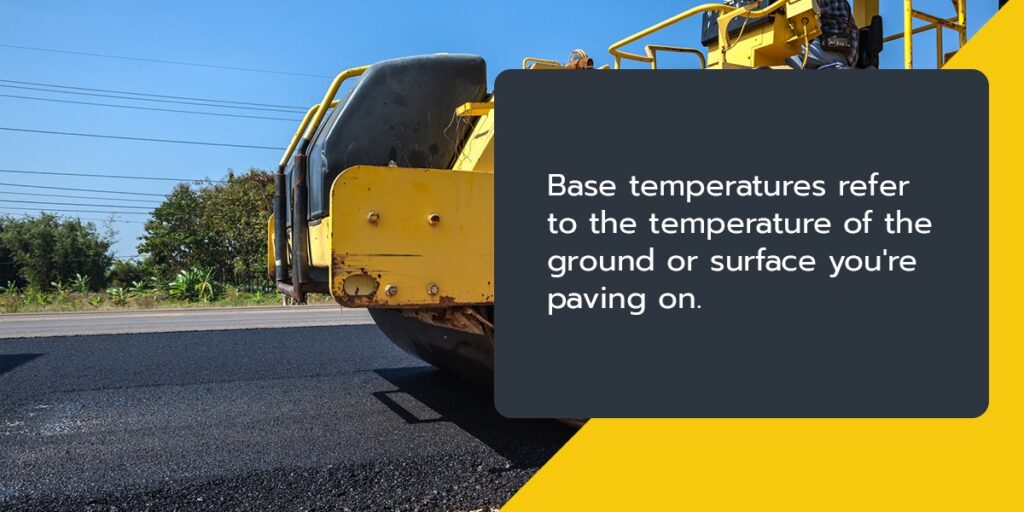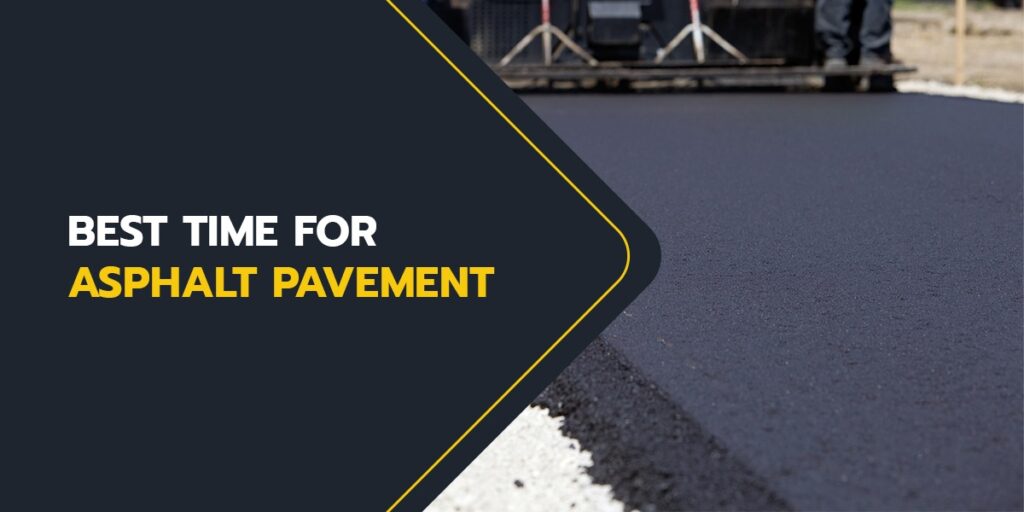If you’re considering new pavement, choosing the best time to lay asphalt is an important factor. If you pave in suboptimal temperatures, you could be putting the appearance and durability of the pavement at risk.
After all, what happens when asphalt gets too hot or too cold? Does windy weather make a difference? How does the temperature affect the results? These are all notable questions to consider, so let’s take a closer look at the effects of temperature and weather on asphalt installation and how you can choose the best time of year to pave. Knowing when you can pave will help you get the best results, both in appearance and function.
Ideal Asphalt Paving Seasons and Temperatures
The best time to pave is usually when the temperature is around 70 degrees Fahrenheit or higher. While you can pave in ambient temperatures down to 50 degrees Fahrenheit, you might not achieve optimal results. Low temperatures cause the pavement to cool more quickly, causing early setting and making it harder to achieve the appropriate compacted density. Like many substances, asphalt mixtures become more viscous as they cool, and as they stiffen up, they resist compaction.
With these effects in mind, spring and summer are usually the best times to pave. While winter isn’t ideal here in Florida, we can pave for the majority of the year. Our year-round average temperature is 70.7 degrees, giving us an excellent environment for paving.
Why Does the Time of Year Matter for Asphalt Paving?
The primary reason why the time of year is so important for paving is temperature. Cool temperatures can have several effects on asphalt, including:
- More air voids: Compaction levels are key to the longevity of asphalt, as compaction determines the amount of space in the material. If the air voids in asphalt are greater than 7%, they can create pathways for air and moisture to enter. If the asphalt stiffens up before being compacted to the 7% threshold, it has a tough time standing up to temperature fluctuations and moisture in the future.
- Raveling: Faster cooling can also cause the surface to ravel. This is a deterioration process that makes asphalt separate from the mixture. Raveling creates a rough surface with loose rocks and debris. While unattractive, it also causes the surface to hold water, reducing its life span and contributing to further raveling.
- Less working time: Another effect of cold temperatures is reduced working time, which could rush the paving team. Although skilled crews can handle a time crunch, it’s certainly not ideal. Fast cooling or cold temperatures put a faster clock on the timeframe they have for compaction. By heating the asphalt mixture toward its upper-temperature limit, workers can reduce viscosity and extend that timeframe.
Ambient temperature isn’t the only consideration when choosing the best time of year to pave. Other temperature-related factors include weather, base temperatures and the temperature of the asphalt mixture itself.
Weather
Both wind and rain cause the asphalt mix to cool faster and contribute to poor compaction and raveling. Again, wind and rain aren’t ideal conditions. However, if they’re mild enough, workers can make some adjustments to better accommodate quick cooling. A few light sprinkles, for instance, might not stop asphalt installation when working with a steady, well-draining surface. Consider the local weather forecast when deciding the best time to lay asphalt.
Early spring and melting snow can bring extra moisture, while late spring can warm up and dry things out. Less humidity also helps the seal coating cure and strengthen. Summer is usually considered asphalt season as the warm weather helps create optimal temperatures. If paving in the fall, you’ll want to make sure that the nighttime temperature is at least 50 degrees to allow for proper curing.
Spring can also come with sizable storms, while fall is likely to have windier days. These conditions can be hard to predict, so summer’s limited volatility makes it a good time for paving.
Base Temperatures

Base temperatures refer to the temperature of the ground or surface you’re paving on. During the daytime, the ground slowly heats up, and at night, it cools. Even if the ambient temperature is warm enough, if the crew starts working at the crack of dawn, the ground may not have had time to warm up to the desired temperature. If nighttime ground temperatures are below the 50-degree mark, you’ll want to hold off for warmer weather.
Some surfaces build up heat, too, and maybe hotter than others, though this is less of a concern, and it may even help the mixture compact better.
Mixture Temperature
The temperature of the mixture itself plays a significant role in how much time is available for compaction. This temperature is usually in the high 200-degree range when it comes out from the equipment. However, different mixtures have different working temperatures. The higher the upper limit is, the longer it takes to cool down to the consistency that’s hard to compact.
When’s the Cheapest Time to Pave?
We know when the best time to pave is, so what’s the most cost-effective time to pave? To avoid problems and get the best results, paving within these ideal temperatures is the best approach. Doing so can help you avoid costly reworks or fast deterioration in the future. Usually, that means working in late spring, summer or early fall.
If you live in a warmer climate like us here in South Florida, seasons won’t make much difference. Even in the coldest months, our low temperatures hover around 60-65 degrees Fahrenheit, meaning we can usually work year-round.
How Does Asphalt Thickness Come Into Play?
The thicker the asphalt, the longer it takes for it to set. If you’re working with a thicker slab, you can generally increase the time available for compaction compared to a thin layer. When working with thin layers, pavers need high ambient and base temperatures to avoid raveling. Depending on the thickness of your asphalt, you may have more or less wiggle room.
Request Asphalt Paving Throughout the Year in South Florida
If you’re in South Florida, you’re in luck. You aren’t limited much when choosing the best time to lay asphalt. Our low temperatures and low humidity make paving possible almost year-round. The experts at The Paving Lady can lay asphalt during all but the coldest days of the year. Whether you’re looking to resurface a parking lot in the heat of summer or lay an asphalt driveway in the springtime, our skilled team is ready to help.
We’ve been paving our way through South Florida since 1985 and consistently surpass expectations with exceptional responsibility, service and reliability. To receive a free estimate or talk to an expert, please reach out to us online or give us a call at 561-567-7182


